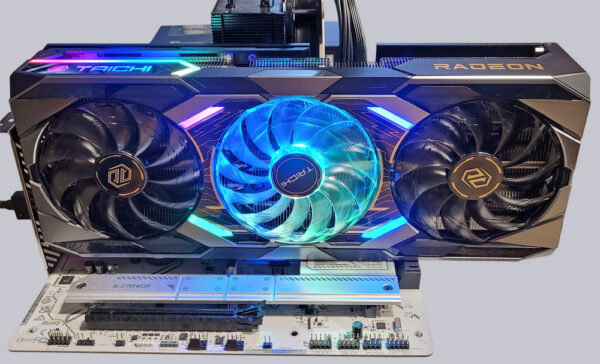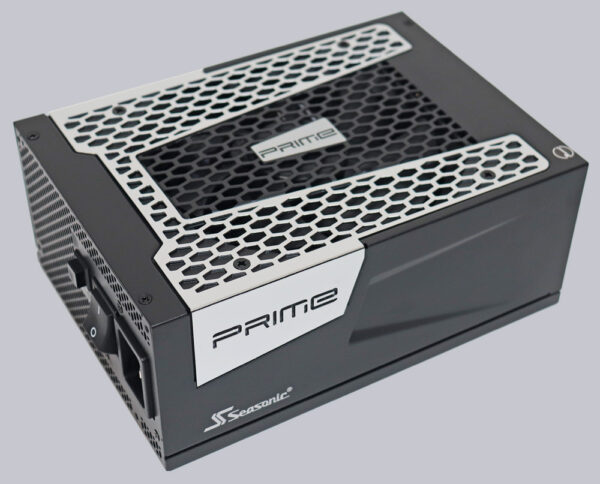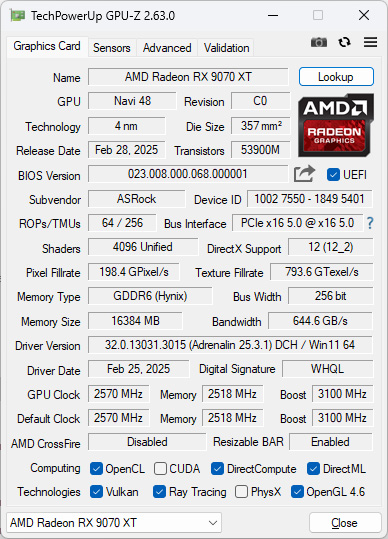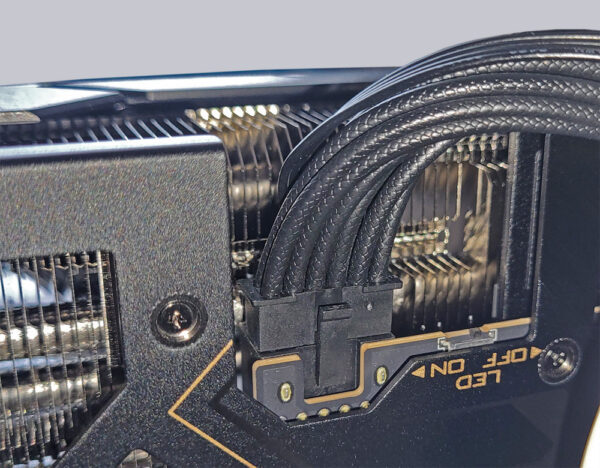
Installation …
Of course, we test ASRock’s new top graphics card on a powerful system equipped with the following components.
| Motherboard | ASRock B850 Steel Legend WiFi |
| SSD | Crucial P5 Plus 1TB M.2 PCIe 4.0 NVMe SSD |
| CPU | AMD Ryzen 7 9800X3D |
| RAM | 2x 32GB DDR5-6400 |
| PSU | Seasonic Prime TX-1300 |
| Operating system | Windows 11 – Version 24H2 |
The ASRock B850 Steel Legend WiFi is an excellently equipped AM5 motherboard with PCIe 5.0 X16 slot and the AMD Ryzen 7 9800X3D processor is currently the first choice for many gamers when it comes to the highest frame rates.

The system is supplemented with a whopping 2x 32GB DDR5-6400 memory from Crucial and the necessary power is provided by the Seasonic Prime TX-1300 ATX 3.0 power supply, which performed excellently in our test and can deliver significantly more power than necessary for this test.

After installing the driver under Windows, we do a small check to see if everything is recognized correctly.

The first thing that catches our eye is the ROP value of 64. According to AMD, the RX 9070 XT should have 128 ROPs. However, there is probably a readout error in GPU-Z in that the number of ROPs has been swapped with the raytracing cores. Fortunately, an additional check with HWiNFO confirms that the ASRock RX 9070 XT has 128 ROPs. So we don’t have to uncover another ROP shortage scandal, as happened recently with the release of the NVidia RTX 5090.

To be on the safe side, we briefly load the RX 9070 XT Taichi at full power before the actual benchmark tests to ensure that the 12V 2×6 pin connector does not cause any problems, but everything is in the green zone. Despite the artificially induced, strong bend in the cable, the plug sits absolutely snugly and securely in the socket. Even when plugging it in, it was noticeable that considerably more force was required than with an 8-pin PCIe connector, but this is also a sign that the connector is then firmly and securely seated in the socket.

However, as it is not always possible to assume a perfectly even current distribution in the 12V 2×6 pin connector, we also took the thermal imaging camera to hand and checked whether the individual wires of the cable become equally warm. But there is no cause for concern here either. So we can go full steam ahead into the tests.

ASRock RX 9070 XT Taichi Benchmark values and practical tests …

